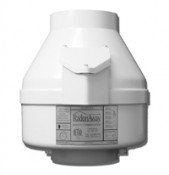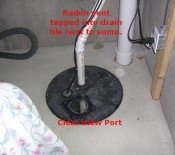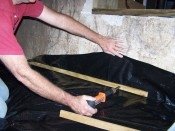Sealing for Radon Reduction
Can I reduce my level by sealing for radon gas in my basement?
Sealing is not consider to be a good stand alone technique for radon abatement. Here are a few reasons for this:
- Caulk has a limited life span especially in basements, where constant moisture changes can be expected in cement foundations and floors.
- New cracks can occur as the basement ages.
- Even the best sealing efforts can easily miss hair line cracks that can add up to significant radon gas entry points.
- Block wall foundations can very difficult to seal properly, especially if you have open cores along the top course.
Should I try radon sealing?
If you have a level close to 4pCi/L you may be able to reduce it a few pCi/L. Open sumps are huge entrance points for radon and moisture and sealing can prove to be worthwhile. Also crack sealing with a good polyurethane caulk and filling large holes like rough ins for future tub and shower drains can help. But please don't be surprised if little or no results are achieved, many try and few succeed.
Regardless of the results, sealing needs to be done anyway for a radon mitigation, to stop the radon fan from sucking the air out of the home. So if you want to give sealing a try before installing a complete radon system, it's a good first step.

Have a Radon Question? Please ask it here...







New! Comments
Have your say about what you just read! Leave me a comment in the box below.